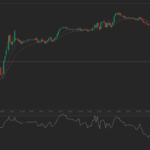Natural gas was steady near $2.900 on Tuesday and Wednesday, following a sharp jump on Monday, as lower supply and warm weather across the majority of the US caused a downward revision to build forecasts for this and next weeks inventory reports by the Energy Information Administration.
Natural gas for delivery in July traded 0.07% lower at $2.892 per million British thermal units at 08:10 GMT, shifting in a daily range of $2.911 – $2.889. The contract rose 0.2% on Tuesday following a 5% jump on Monday and a 6.2% gain last week.
The Energy Information Administration is expected to report tomorrow that US natural gas inventories probably rose by 95 billion cubic feet in the week ended June 12th, down from previous projections for a build of 100 bcf or slightly above. This compared to the five-year average inventory increase of 87 billion cubic feet, while stockpiles rose by 112 bcf a year earlier.
Next week’s number, due out on June 25th, will likely be near normal, with early projections pointing to an inventory build of around 85 bcf for the week ended June 19th, compared to the five-year average gain of 86 bcf and the year-ago one of 110 bcf.
According to NatGasWeather.com, natural gas demand in the US will be moderate compared to normal through June 23rd, and locally high over the Southeast, with near-normal temperatures projected for most of the US during the following seven days, except for slightly higher over the Southeast & Mid-Atlantic.
Weather outlook
Tropical depression Bill will track across Texas today, moving northward at the speed of 13 mph with maximum sustained winds of 35 mph before turning northeast on Thursday, the National Hurricane Center said. Bill is expected to produce several inches of rain and cooler temperatures, easing the need for cooling, and will continue to weaken over the next 48 hours.
Meanwhile, conditions remain very warm to hot in many other US regions, with the Southeast, including Florida, driving the nations strongest cooling demand as highs remain in the 90s. Near-record heat will occur over North and South Carolina, while the West remains very warm as well. A weak Canadian weather system will bring showers and thunderstorms over the Midwest and Northeast, capping highs to the comfortable upper 60s to lower 80s and slightly lowering readings in adjacent regions as well, before high pressure re-strengthens over much of the country during the weekend and early next week.
Active weather will continue during the fourth week of June as well, NatGasWeather.com said, with the eastern, western and southern US continuing to experience seasonal very warm temperatures. The north-central US will again be impacted by Canadian weather systems spilling cooler air that would keep temperatures near normal or slightly lower, while also pushing readings down by a few degrees in neighboring regions.
Weather developments after June 25th will require close monitoring as data remain inconclusive on whether high pressure will hold or will give way to cooler Canadian systems to track across the border and bring a comfortable bearish pattern over the North and East.
Readings
According to AccuWeather.com, New York will reach 79 degrees Fahrenheit today, 1 below usual, and will hover near normal through the end of the month. Chicago will peak in the mid-high 70s the next couple of days, compared to the average 81, before rising into the low-mid 80s.
Down South, readings in Texas City will max out at 85 degrees today, slightly below the usual 88, followed by a warm-up into the low 90s afterwards. On the West Coast, the high in Los Angeles will be 83 degrees, 5 above usual, and highs will remain in the low-mid 80s for most of the remainder of the month.
Pivot points
According to Binary Tribune’s daily analysis, July natural gas futures’ central pivot point stands at $2.885. In case the contract penetrates the first resistance level at $2.938 per million British thermal units, it will encounter next resistance at $2.983. If breached, upside movement may attempt to advance to $3.036 per mBtu.
If the energy source drops below its S1 level at $2.840 per mBtu, it will next see support at $2.787. In case the second key support zone is breached, the power-station fuel’s downward movement may extend to $2.742 per mBtu.
In weekly terms, the central pivot point is at $2.765. The three key resistance levels are as follows: R1 – $2.907, R2 – $3.063, R3 – $3.205. The three key support levels are: S1 – $2.609, S2 – $2.467, S3 – $2.311.





